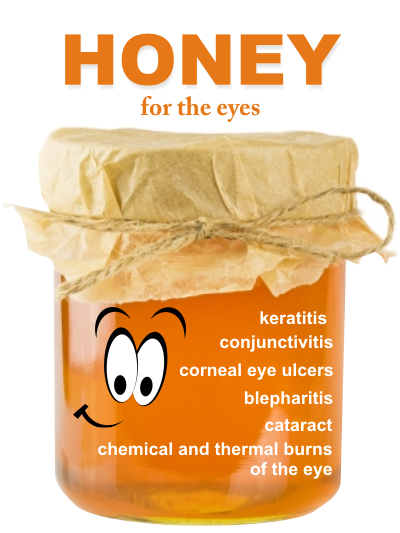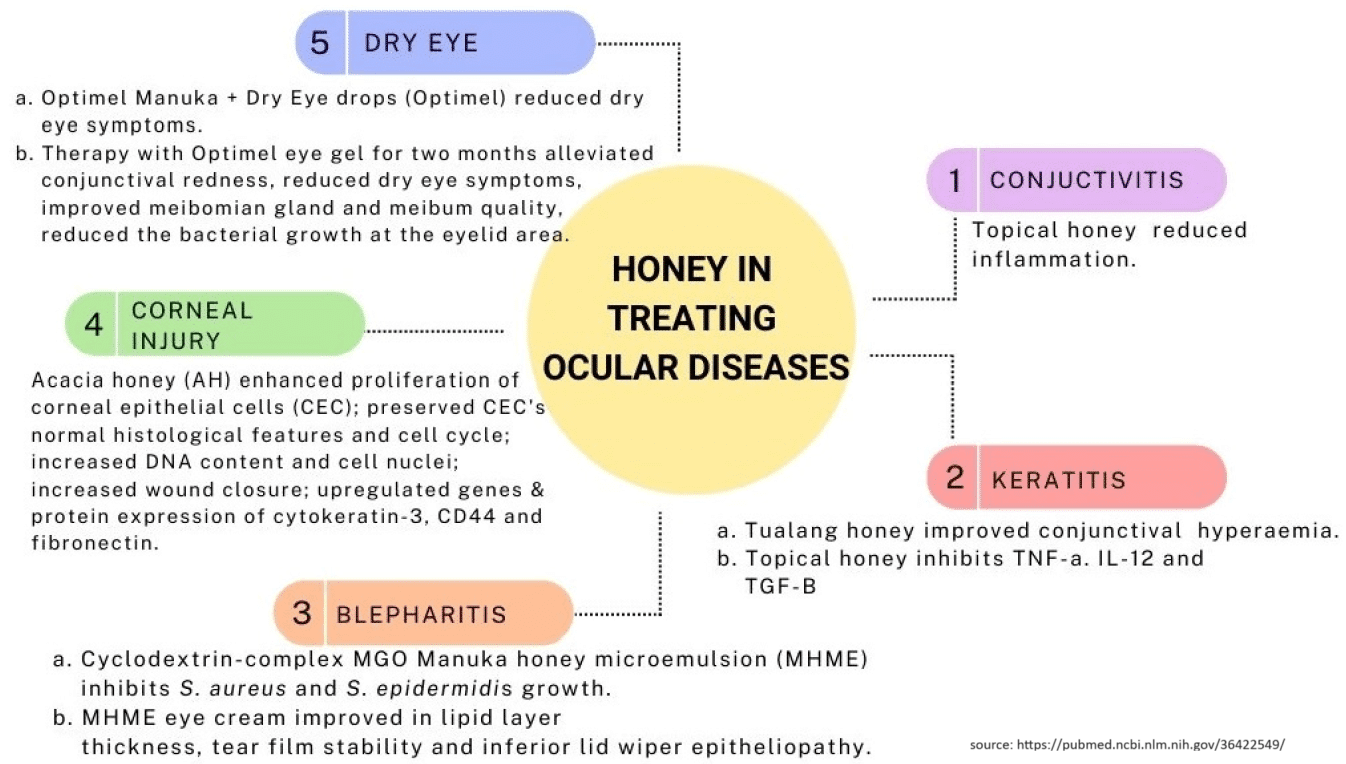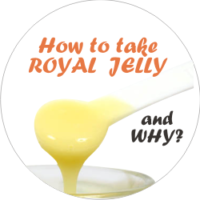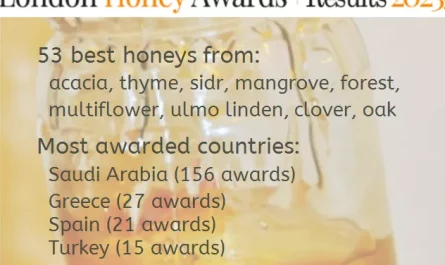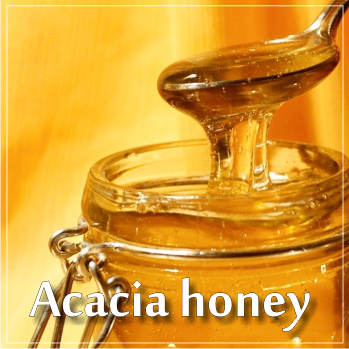Raw organic honey is used for eye diseases. This is not a new discovery, nor something that needs to be put in the headlines of our daily news. There have been details about this ever since 350 BC, when Aristotle wrote his Historia Animalium. So why have we completely abandoned this traditional way of healing our eyes?
Conjunctivitis and pink eye are the same?
Not quite. Conjunctivitis is always associated with a pink eye. But not vice-versa. (And there is also keratitis that pinks the white of the eye), a disease that, untreated, may lead to corneal blindness.
Conjunctivitis is an inflammation of the conjunctiva that can have 3 causes:
– a viral infection (adenovirus, herpes simplex or varicella-zoster virus)
– an microbial infection (Staphylococcus aureus, Streptococcus pneumoniae, and Haemophilus influenzae)
– an allergic one (pollen, perfumes, cosmetics, smoke, dust mites)
A pink eye can also be caused by:
– a chemical contamination
– a foreign object in the eye
– a blocked tear duct, usually at babies.
When conjunctiva is inflamed, its small blood vessels become swollen and irritated and thus more visible. This is what causes the whites of the eyes to appear reddish or pink.
Pink eye symptoms
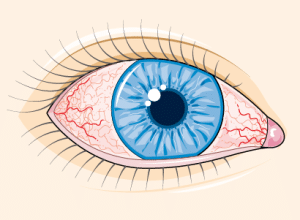
- Itchiness
- A feeling of sand or dirt
- A discharge in one or both eyes that forms a crust during the night that may prevent your eye or eyes from opening in the morning.
- Tearing.
- Pain. If you feel serious pain, blurred vision, light sensitivity, decreased vision and a feeling that something is stuck in your eye, go see a doctor. Pink eye is also the symptom of other, more serious diseases of the eye. Keratitis, for example.
If your pink eyes are caused by an allergy, the symptoms would be:
- intense itching,
- tearing and inflammation of the eyes,
- sneezing and watery nasal discharge. Most allergic conjunctivitis can be controlled with allergy eye drops.
Is pink eye contagious?
Yes, if its cause is viral or microbial.
No, if its cause is allergic.
Pink eye treatment
Conventional medicines recommends eye drops with corticosteroid and broad-spectrum antibiotics. Why don’t we use them?
We do, but they don’t work for everybody.
There are harmful ocular risks associated with the use of corticosteroids, such as increased intraocular pressure, cataract, and corneal ulcers. Thus, the natural approach.
Is honey a possible pink eye natural treatment?
In Mali and traditional Indian medicine, honey has been long used to treat eye disorders. Mayas were using honey for the eyes. Russia, Egypt, Romania are only some of the countries which bring reports and proofs that honey can be a trustworthy remedy in treating eye diseases.
To treat the eye, honey was applied topically; ingesting it is not enough. It was applied on the exterior parts of the eyes, particularly in treating conjunctivitis, keratitis, blepharitis, and corneal injury.
Good to know! Propolis is also a natural product beneficial in the internal ocular area, such as the retina, optic nerve, and uvea.
· In ancient times, honey from Attica had a special reputation as a curative substance for eye disorders.¹
· In Mali for the topical treatment of measles, and in the eyes in measles to prevent conical scarring.²
· In the Rangarya Medical College of India honey has been used to treat corneal eye ulcers, blepharitis (inflammation of he eye-lids), catarrhal conjunctivitis and keratitis. And honey was also successful in various ailments of the cornea.
Sarma, an ophthalmic surgeon at Rangaraya Medical College, India, has been treating bacterial corneal ulcers with honey. Good results in general were obtained, with remission in more than 60% of the cases.
· Another report has described the use of honey in place of petroleum jelly in a 3% sulfidine eye ointment for the treatment of three cases of keratitis. 4
· It also described a case where a lime burn of the cornea was treated with pure honey, with half-vision being restored in 12 days; and several other cases of scrofulous keratitis had responded to treatment with pure honey.

Russian apitherapists have revealed the way they use honey to treat the eye: undiluted or 20-50 % water solutions is applied to the eye under the lower eye lid to treat chemical and thermal burns of the eye, conjunctivitis and infections of the cornea.
How can honey treat eye diseases?
The healing effect of honey is explained by its anti-inflammatory, antibacterial and antifungal properties of honey.
Any scientific research to confirm the pink eye treatment with honey?
The studies are primarily animal and in vitro.
It’s not easy and comfortable to apply honey on your eyes. For this researchers used honey in form of eye drops and ointments. They were used for conditions affecting structures of the ocular surface, mainly the conjunctiva, cornea, and eyelid.
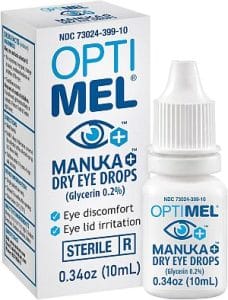
The recommended honey has to be medical graded, but not many producers afford or bother to do it. By now, only manuka honey has a product, Optimel eye drops, indicated for the treatment of chronic dry eye and blepharitis.
• In 1955, Meier has referred to honey being used to treat eyes discharging pus.³
• In 1982 EMARAH, M H wrote “A clinical study of the topical use of bee honey in the treatment of some occular
diseases.” published in the “Bulletin of Islamic Medicine”. The study reports the successful treatment by honey of keratitis, conjunctivitis and blepharitis in Egypt.
The honey was applied under the lower eyelid just like an eye ointment would be. Improvement was seen in 85% of the cases, with no deterioration seen in any of the other 15%.
There was reported a transient stinging sensation and redness of the eye soon after putting honey in the eye, but never enough to stop the treatment in the 102 cases in the trial. A similar reaction was reported by one of the other authors describing the use of honey in ophthalmology.
• In 1999 POTSCHINKOVA, P wrote “Apitherapie: Die Heilkraft von Honig and Co.”, Ehrenwirth Verlag München, reporting that stingless bee honey has been traditionally used by the Mayas against cataract.
• In 2001 Peter Molan wrote in his work “Why honey is effective as a medicine. Its use in modern medicine”, a review on how honey was always used in treating eye conditions.
• In 2003 ALI, A T M M wrote in his “Prevention of ammonia-induced gastric lesions in rats by natural honey.” published in the Journal of Nutritional & Environmental Medicine, another explanation of the healing effect of honey in eye diseases, consists in an irritation effect that triggers healing processes of the eye.
• In 2011 UWAYDAT, S; et al. in their work “The Use of Topical Honey in the Treatment of Corneal Abrasions and Endotoxin-Induced Keratitis in an Animal Model. Current eye research explains why honey is good for keratitis:
“The positive effect in keratitis to reducing the levels of angiogenic factors (VEGF and TGF-beta), inflammatory cytokines (IL-12) and chemokines (CC chemokine receptor 5(CCR-5)”
![]()
• In 2012 the study The efficacy of stingless bee honey for the treatment of bacteria-induced conjunctivitis in guinea pigs, showed that topical application of stingless bee honey in S. aureus and P. aeruginosa induced conjunctivitis,
for 12 hours, for two weeks, reduced the inflammatory signs, duration of infection, and time for complete resolution of bacterial infection. This finding was comparable with the gentamicin-treated group.
• In 2014 a double-blind clinical trial in vernal keratoconjunctivitis, adjuvant therapy of 60% honey-based topical eye drop has resulted in a reduction in eye redness and limbal papillae, with promising minimal use of steroids and minimal increase in eye pressure.
• In 2022, the review Therapeutic Potential of Honey and Propolis on Ocular Disease by Norhashima Abd Rashid et al., offers a broad approach on honey effects on eye diseases. See picture:
Acacia honey is a promising eye conjunctivitis treatment and also corneal injury treatment.
- Acacia honey has been studied for its proliferative capacity on corneal epithelial cells. It enhanced the their proliferation while preserving its normal histological features and cell cycle, accompanied by increased DNA content and cell nuclei. See the 2014 study: Proliferative Capacity of in Vitro Corneal Epithelium: Role of Acacia Honey in the Initial Step of Wound Healing.
- In a different in-vitro study from acacia honey accelerated the wound closure and upregulated both genes and proteins expression of cytokeratin-3, a cluster of differentiation 44 (CD44), and fibronectin. See the study from 2015, The effects of acacia honey on in vitro corneal abrasion wound healing model.
Honey for the eyes – a precious medicine in Romania
Romania is a country with a long tradition in beekeeping. No wonder then, that it holds lots of products from the hive, good as food and medicine.
Our grandparents and great grandparents often used honey eyes. It was at handy whenever they needed it, while working in the field or at the end of a working day. They would use it as a cream on red eyes with dust and dirt.
And although this honey was something long used by Romanian peasants, today we can hardly find any.
Don’t ask why, the Big Pharma holds all the answers.
Ion Bodnariu is among the few beekeepers who still has eye honey. He lives on Danube’s side, near Harsova, and has 200 hives. And though it has over 34 years of experience, he still says he doesn’t hold the absolute truth of harvesting the best honey for the eye. He’s probably just being modest.
 picture source
picture source
What is different at this honey?
It’s acacia honey, but a noble accacia honey, extracted only from honeycombs caps. “These caps are a natural seal that bees make” – Bodnariu says. According to him, the bees makes the cell, fill it with honey and before capping it completely, then they leave a small hole. Through it, the bees add a secretion above the honey, containing a bactericidal enzyme called lysozyme, designed to protect honey from cell spores, bacteria and fungi.
What he does now is cut the caps, leave them to drain, and strain them. The honey obtained is more valuable than the rest of the honey from the cell.
It is said that Accacia honey has over 435 components. If we add the other enzymes added by the bee in the last moment to better preserve the honey, we get a more valuable honey. In an analysis report, diastase was found in a doubled quantity found in regular acacia honey.
Bodnariu recommends this noble acacia honey for conjunctivitis, dark circles, corneal erosions and cataracts.
This is how it is used:
Dip your clean finger into the honey and then anoint the eyelid with it. This will excite the tear glands at the base of the eye, near the nose. We will feel a burning, yet bearable, sensation. Our tears will mix with the honey and liquefy it enough to cover the eye. The lysozyme will disinfect the eye and the vitamins in honey will nourish the connective tissues. – This is how our beekeeper explains the magic of this honey.
To be considered organic honey, the hives must be placed in an unpolluted place. The Danube offers a natural habitat, free of civilization. That’s one white ball for Romanian honey.
***
References:
¹ BECK, B SMEDLEY, D (1944) Honey and your health. McBride; New York, USA (2nd edition).
² OBI, C14 UGOJI, E 0; EDUN, S A; LAWAL, S F; ANYIWO, C E (1994) The antibacterial effect of honey on diarrhoea causing bacterial agents isolated in Lagos, Nigeria. African Journal of Medico) Sciences 23: 257-260.
³ MEIER. K E; FREITAG, G (1955) Ober die andbiodschen Eigenschaften von Sacchariden und Bienenhonig, Zeitschrift fur Hygiene und Infektionskrankheiten 141:326-332,
OSAULKO, G K (1953) [Use of honey in treatment of the eye.) Vestnik Oftoemologit (Moskow) 32: 35-36 (in Russian).
Why honey is effective as a medicine.
http://agrointel.ro/54447/ion-bodnariu-printre-putinii-apicultori-care-mai-produc-mierea-de-ochi-cu-care-bunicii-nostri-isi-tratau-vederea/
Picture of the eye wikimedia commons.

